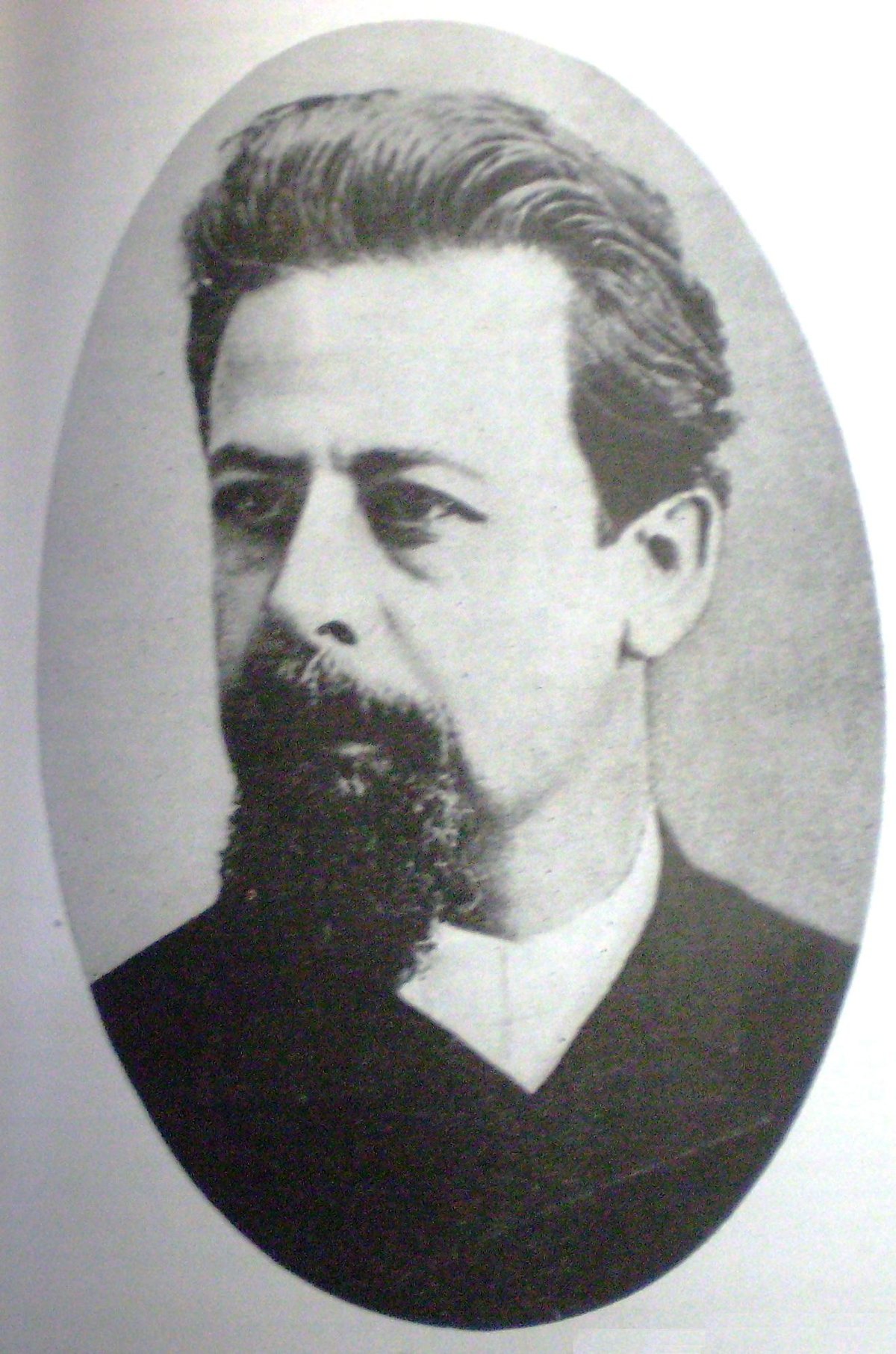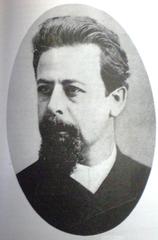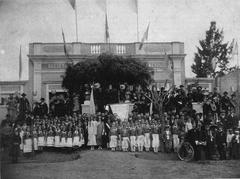
Marcos Paz, Buenos Aires, Argentina: Comprehensive Guide to Visiting Hours, Tickets, and Historical Sites
Date: 15/06/2025
Introduction: Discover Marcos Paz
Situated just west of Buenos Aires, Marcos Paz is a unique destination where rich Argentine history, cultural traditions, and the tranquil Pampas landscape converge. Established in the late 1800s as a vital railway town, Marcos Paz is named after Vice President Marcos Paz, whose legacy is interwoven with the city’s identity. Visitors will find a welcoming community, verdant parks that have earned it the nickname “Pueblo del árbol” (Town of the Tree), and a vibrant calendar of festivals and cultural events.
The city’s proximity to Buenos Aires ensures convenient access by train, bus, or car, making it ideal for day trips or longer explorations. Whether you’re strolling through lively markets at Plaza 25 de Mayo, delving into local history at the San Marcos Evangelista Sanctuary Parish, or enjoying the serene Lago de Marcos Paz, this guide provides essential information on historical context, top attractions, visiting hours, tickets, local customs, transportation, and more.
For the latest updates and travel alerts, refer to the official municipal website, Maplandia, and marcospaznoticias.com.
Table of Contents
- Historical Overview
- Geography and Accessibility
- Practical Tips for Visitors
- Top Attractions and Visiting Information
- Local Life, Culture, and Events
- Transportation and Accessibility
- Frequently Asked Questions (FAQs)
- Visitor Recommendations
- References and External Links
Historical Overview
Founding and Growth
Marcos Paz emerged in the late 19th century with the expansion of Argentina’s railway system, fostering agricultural and population growth in the Pampas (Maplandia, Mapcarta). The town is named after Marcos Paz, a distinguished politician and vice president under Bartolomé Mitre, reflecting the era’s tradition of honoring national leaders (Wikipedia).
The railway station, still a prominent landmark, catalyzed the city’s transformation from rural farmland to a thriving community. The arrival of European immigrants further shaped the city’s character, infusing it with diverse cultural influences.
Historic Figures and Community Builders
Prominent individuals, such as Dr. Héctor J. D’Agnillo (physician and mayor, 1932–1936), played key roles in establishing healthcare and civic infrastructure (marcospaz.gov.ar). Educators like Juan Francisco Jauregui and Ramón Melgar are commemorated for founding the local educational system.
Cultural Identity
The city’s poetic nickname, “Pueblo del árbol,” was popularized by Mario J. Grand and celebrates Marcos Paz’s leafy streets and commitment to green spaces. Social clubs, artisan groups, and the transformation of spaces like the former Lions Club into the Center for the Arts “La Cueva” underscore the city’s active cultural scene.
Recent Developments
Marcos Paz is committed to preserving its social memory, particularly regarding the last military dictatorship, and continues to evolve through projects like a new penitentiary complex, which is reshaping the local economy and social landscape (Palermo Web).
Geography and Accessibility
Location
Marcos Paz lies 48 km west of Buenos Aires, within the fertile Pampas plains (coordinates: 34°46′54″ S, 58°50′45″ W) (Maplandia). It is part of the Greater Buenos Aires metropolitan area, easily reached via train (Merlo-Lobos line), bus, or car.
Landscape and Climate
The area features open grasslands, tree-lined avenues, and rural estancias. The climate is temperate, with warm summers (highs ~30°C/86°F) and mild winters (lows ~6°C/43°F). Visit in spring (Sep–Nov) or autumn (Mar–May) for optimal weather (marcospaznoticias.com).
Population
The city and its surrounding partido have approximately 67,000 residents (citypopulation.de).
Natural and Paleontological Heritage
Paleontological discoveries, including mastodon fossils, have earned Marcos Paz the moniker “tierra de mastodontes” and inspired educational initiatives (marcospaznoticias.com).
Practical Tips for Visitors
- Language: Spanish is predominant; some English may be spoken in tourist areas.
- Etiquette: Warm greetings, casual but neat dress, and late meal times are customary (Rough Guides).
- Safety: Marcos Paz is safe; standard precautions apply.
- Healthcare: The local hospital provides medical services; pharmacies are available (marcospaznoticias.com).
- Responsible Tourism: Support local artisans and preserve green spaces (marcospaz.gov.ar).
Top Attractions and Visiting Information
Historical Sites
- San Marcos Evangelista Sanctuary Parish: Open daily 8:00 AM–7:00 PM, free entry, guided tours available (marcospaz.gov.ar).
- Municipal Cemetery Historical Tour: Self-guided, 8:00 AM–6:00 PM, year-round, maps available at tourist center.
- Parish Church of Nuestra Señora de la Paz: Open 9:00 AM–6:00 PM, no entry fee.
Museums and Cultural Centers
- Municipal Museum: Tues–Sat, 10:00 AM–5:00 PM, ARS 100/adults, free for children under 12.
- Centro Cultural La Vieja Usina: Tues–Sun, 10:00 AM–8:00 PM, free exhibitions; ticketed special events.
Parks and Outdoor Spaces
- Plaza San Martín: Open 24 hours, central green space and monuments.
- Parque Municipal de Marcos Paz: Daily, 7:00 AM–8:00 PM, free, accessible.
- Lago de Marcos Paz: Sunrise to sunset, free, walking trails and birdwatching.
Family and Community Spaces
- Parque de los Niños: 8:00 AM–7:00 PM, free, accessible playgrounds and picnic areas.
Estancias and Rural Tourism
- Estancia La Elvira: Weekends 9:00 AM–6:00 PM, ARS 500 includes activities; horseback riding and asados. Weekdays by appointment.
Religious and Historical Sites
- Iglesia San Miguel Arcángel: 9:00 AM–12:00 PM and 5:00 PM–7:00 PM, free, donations welcome.
Local Life, Culture, and Events
- Festivals: Key events include the Fiesta Nacional de la Tradición (Aug), Carnaval, Independence Day (Jul 9), and the May Revolution (May 25) (Mad-Traveller, BuenosAires.com).
- Markets: Artisan markets at Plaza 25 de Mayo offer crafts, food, and textiles.
- Gastronomy: Enjoy local parrillas, asado, and mate. Weekly markets feature regional cheeses, meats, and sweets (kimkim.com).
- Arts: The city hosts art workshops, theater, and music events at venues such as Centro Cultural La Vieja Usina.
Transportation and Accessibility
- By Train: Merlo-Lobos line connects Marcos Paz to Buenos Aires (Once Station); journey is 70–90 minutes (Mapcarta).
- By Bus: Línea 136 and other regional buses, SUBE card required, 90–120 minutes (nickipoststravelstuff.com).
- By Car: Acceso Oeste highway and Provincial Routes 6 or 40.
- Local Transport: Taxis readily available, ride-sharing apps limited.
- Accessibility: Many parks and public spaces are wheelchair accessible, though some older sites may require assistance.
Frequently Asked Questions (FAQs)
Q: What are the visiting hours for key historical sites?
A: San Marcos Evangelista Sanctuary Parish: 8:00 AM–7:00 PM; Municipal Cemetery: 8:00 AM–6:00 PM; Municipal Museum: Tues–Sat, 10:00 AM–5:00 PM.
Q: Are tickets required for attractions?
A: Most sites are free; the Municipal Museum and Estancia La Elvira charge modest fees.
Q: How do I reach Marcos Paz from Buenos Aires?
A: By train (Merlo-Lobos line), bus (Línea 136), or car via Acceso Oeste and Provincial Route 6.
Q: Is Marcos Paz family friendly?
A: Yes, with parks, festivals, and family-oriented events.
Q: Are guided tours available?
A: Yes, for historical sites, estancias, and during festivals; advance booking recommended.
Q: Best time to visit?
A: Spring and autumn for festivals, mild weather, and vibrant scenery.
Visitor Recommendations
- Book accommodations early during festivals.
- Obtain a SUBE card for public transport.
- Plan around local events for cultural immersion.
- Respect local customs and participate in mate circles or asados for authentic experiences.
- Support local artisans and responsible tourism initiatives.
References and External Links
- Official Marcos Paz Municipal Website
- Maplandia Marcos Paz Guide
- Mapcarta Marcos Paz Guide
- Municipal Cemetery Historical Tour
- Marcos Paz Noticias
- Marcos Paz on Wikipedia
- Overyourplace: Buenos Aires Culture
- SouthAmerica.travel: Argentina Overview
- BuenosAires.com: Seasonal Events
- Mad-Traveller: Buenos Aires Festivals
- Palermo Web: New Penitentiary Project
- Nicki Post’s Buenos Aires Transport Guide
- Tourist Places Guide: Marcos Paz
- KimKim: Best Local Activities in Argentina
Plan your Marcos Paz adventure today to embrace Argentine heritage, hospitality, and discovery just beyond Buenos Aires. For personalized travel guides and updates, download the Audiala app and follow us on social media.































































































































































